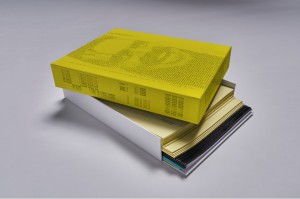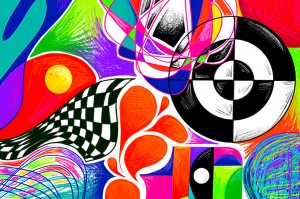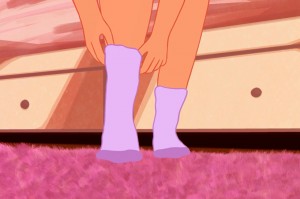Film How: Northern Soul / Factory — Reviewed
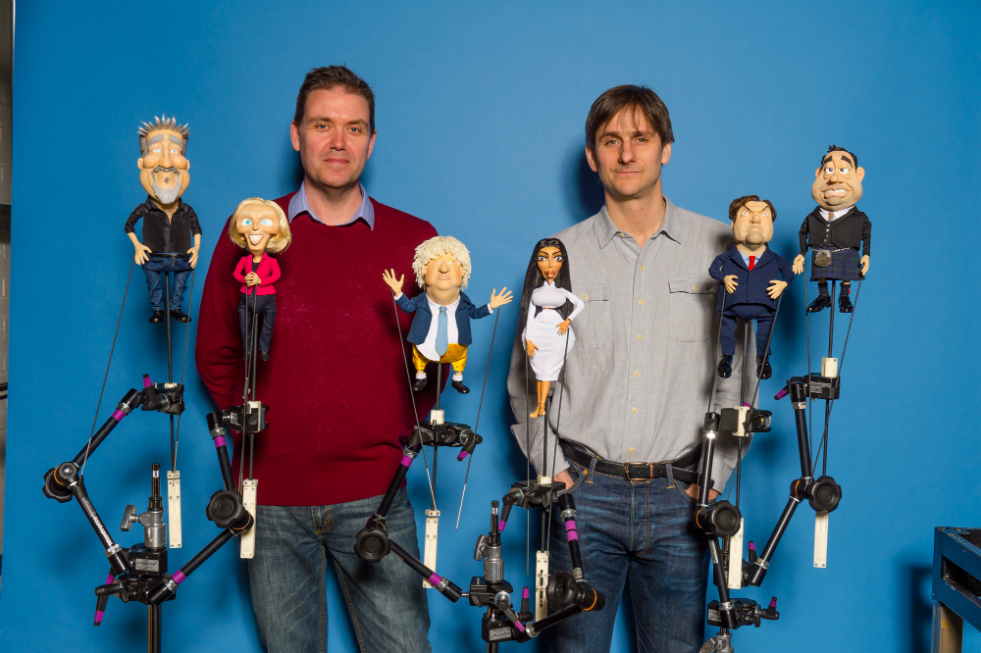
From finding the right shade of pink wool to knit the Clangers, to sourcing a catalogue of rare Northern Soul tracks: Kirsty Fitzpatrick hears from two design teams using Manchester’s resources to make waves in film and television…
“Everyone knows everyone in Manchester” — overhead at the city’s biggest design festival last week. It’s an opinion often wheeled out at events like this to relax and befriend people, regardless of location, but with Manchester you can almost believe it; especially in Design MCR’s case.
Back for its third year running with a theme of Know How, the festival — according to its website — want to make design accessible; ‘to educate and inspire and to showcase the rich heritage and future of design in Manchester’. I was hoping to learn a few things at Film How: an ‘in conversation’ event sharing insight into the creative processes behind soul music feature film Northern Soul (2014) and multi-genre animation studio Factory. What I found was a creative community bustling with mutual admiration, plus a wealth of home-grown, new talent.
Phil Chalk from Factory was up first; an Altrincham-based studio that have worked on some high profile television projects — including Roary the Racing Car, Fifi and the Flower Tots, Muddle Earth, Raa Raa the Noisy Lion and BAFTA nominated Strange Hill High. Chalk’s promise to “explore the unimaginable” is evident in his work of rod puppetry and digital animation, especially in shows Newzoids and Clangers, which were spoken about at length.
Utilising the advancements in modern technology, Factory is able to create puppets which focus on an exaggerated feature or nuanced movement to create topical, hilarious sketches. With an obvious nod to its predecessor Spitting Image, Newzoids uses a combination of topical comedy and supermarionation to create a modern, fast-paced programme with short punchy sketches akin to Vines, charged with up to the moment satire. It is a credit to Chalk and the whole team at Factory that they were able to both write the satirical jokes to fill the show, as well as engineer the puppets to perform them, to the strictest of deadlines every week.
Newzoids is also highly unusual as a programme; it worked its way from an embryonic stage to being commissioned by ITV in just six weeks, with only two months of preproduction. I was particularly interested in how the characters on the show were developed. This process starts with a caricature, sketched by artist Mike Giblin, which is then textured and sculpted using ZBrush (a design package), and then put through a rapid prototyping machine to creative a 3D model. Voicing the puppets was a contentious topic, Chalk told us; Ant and Dec, ITV royalty, were originally depicted in the show as having highly pitched voices. The developers were told to drop a little bass in there, so as not to offend the cheeky duo.
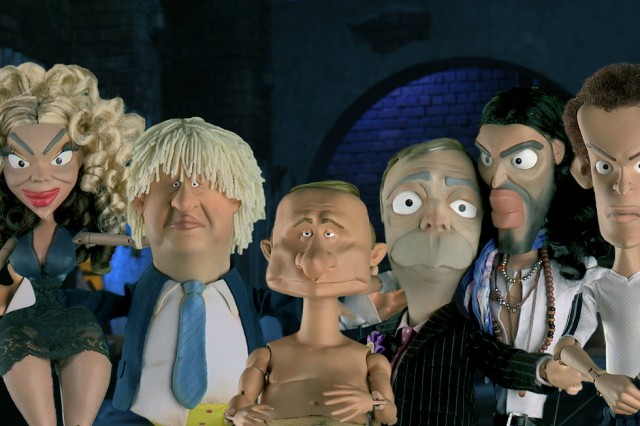
Chalk took questions from the audience who were keen to hear how he entered the industry. We were surprised to find out that he began as a musician and conductor. Jokingly, he said that he took his musical ability and became a nuclear engineer, then moved onto robotics. It’s clear to see how this transition has aided him in his work with animation and puppetry. Chalk’s talent landed him a place at the famous Cosgrove Hall animation studio in Chorlton-cum-Hardy, Manchester; something he added was grateful to have situated in the North-West.
One story that I thoroughly enjoyed was of the craft and detail that went into recreating the Clangers. The team at Factory tried their hardest to keep the original look of the puppets and spent three months sourcing the right wool (Old Rose – polyester) in order for the Clanger Knitter (what a job title!) to reskin the models. The care taken was endearing, and I really enjoyed hearing about the research that went into attaining an accurate retro look, and also that famous Clanger sound: we found out Mother Clanger’s voice is created using a Bakelite swanee whistle from 1926.
The second part of the evening was devoted to the creative team behind Northern Soul, which was filmed in Bury, Greater Manchester; music supervisor Gary Welch, producer Debbie Gray and wardrobe assistant Lauren Reyhani were on hand to discuss which became a running theme of the evening: the production’s dedication to authenticity.
The heart of Northern Soul subculture and the 2014 film is the music. Welch explained how the track choices complimented and supported the script and how nothing was added in post; when you saw the dancers clap to the beat and stomp at rapid moments of a floorfiller, they were moving to the song heard in the finished film. Due to the age of the music, rights were often an issue; but with the help of DJs and collectors, Welch was able to accumulate a vast catalogue of (often rare) songs he referred to as “A melting pot of tracks”, that has gone on to become a successful soundtrack on vinyl as well via digital download.
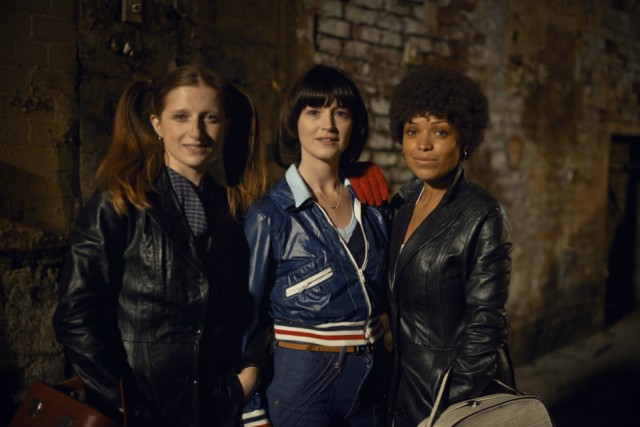
When discussing the wardrobe, hair and make-up, you get a sense that the fans of the scene were a huge help in sourcing outfits. Often clothes were loaned by clothing companies, such as Brutus shirts, or recreated by the costume department. When making the distinct silhouettes of the principle cast and the dancers, primary sources were vital — such as photographs and oral histories from people who attended Northern Soul nights in the present day and in the 1970s. Wardrobe assistant Reyhani mentioned how we all “bend details” when we’re nostalgic, so keeping truthful with details really relied on photographs and archived footage.
The subject of subcultures and its place in modern life was discussed by all three members of the creative team. There is a scene in Northern Soul where the two leads enter a record shop, and in this one space the audience is exposed to a variety of ‘groups’ that emerged in the ‘70s. Reyhani explained that the different tastes in music were expressed through dress; be it the tartan of a Bay City Rollers fan or the bags and vest top of a soul boy, clothes had meaning. Welch added that now “people see everything all the time”: suggesting that sharing through social media, and how counter-culture is now a commodity, has perhaps lessened the need for such a strict division in the natural symbiotic relationship of fashion and music.
Fashion does repeat trends of bygone times — the idea of borrowing and recreating is often illustrated on the catwalks — so can we still be precious about a scene from forty years ago? Well, some people are, and Topshop’s recent venture into Northern Soul-inspired attire did rankle fans. However, I think the rejuvenation of the scene’s style and revival of the music — and soul nights — is in part a credit to the film’s success. So long may it live on with a new generation.
Film How, although technical in some aspects, was thoroughly enjoyable, and did what it said on the tin: I was educated, inspired and learned more about the rich heritage and future of design in Manchester. The host, freelance writer Katie Popperwell, had astute and well thought-out questions that allowed the guests to speak for long periods of time; but the event also had an engaged audience with some great questions for the guests. From discussing degeneration of subcultures and the regeneration of fashion, to how a trumpeter can become a successful puppeteer, Design MCR’s Film How was a thought-provoking and, at times, heartening experience that showcased some fantastic Manchester-sourced talent.
I’ll finish with some words of wisdom and encouragement from Phil Chalk: “Stick to vision. Don’t compromise. Don’t follow trends, and stick to your principles.”
Kirsty Fitzpatrick
Kirsty saw Film How: Northern Soul / Factory on Monday 19 October 2015 6-9pm at 70 Oxford Street, Manchester, M1 5NH
Design MCR has now finished, but you can still see Unfinished Business, an exhibition of iconic and appropriated imagery by graphic artist Ian ‘Swifty’ Swift, at Kosmonaut (for the foreseeable future) and the window of Fred Aldous (until 06/11). For more info see the full online programme
Follow @designmcr on Twitter



